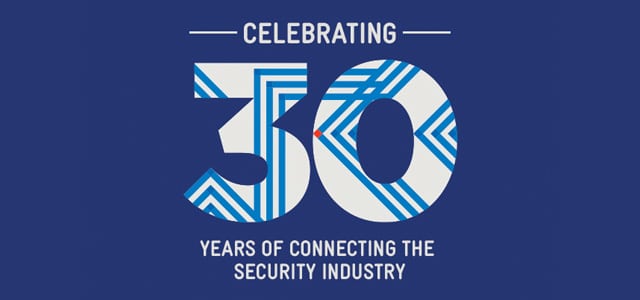Staggering changes over the past 30 years of security
This year marks the 30th anniversary of the Security Exhibition and Conference, Australia’s leading security event. While in the grand scheme of things thirty years may not seem like a long time, there would be few people (if any) currently still working in the industry who could lay claim to having been at that inaugural event in 1986.
Personally, my first Security expo was in 1999, almost halfway through it current history and yet the change I have witnessed over that time is truly astounding. Irrespective of the growth of the event, one cannot help but be staggered by the changes which have occurred across the industry in the last thirty years. To think that when the security show first began back in 1986, the industry was largely unregulated, and then to see where the industry is today is, in my opinion, an astounding achievement.
The introduction of licensing for security personnel, consultants, control room operators and the like; registration for installers; tertiary qualifications and diplomas for those who want to take their career to a different level; and the establishment of not just Australian, but also international standards which govern security practices, have all meant the industry has evolved from not just a technical but also a professional point of view.
This can has been seen through the emergence of groups like the Australian Security Industry Association Limited (ASIAL), Security Providers Association of Australia Limited, Victorian Security Institute, National Security Association of Australia, Security Professionals Australasia, Security Agents Institute of Western Australia and Security Professionals Australasia (to name just a few) giving rise to initiatives such as the Security Professionals Registry Australasia, as well as the widespread adoption of international groups such as the Australian Secret Intelligence Service (ASIS) by Australian security professionals.
From a technical point of view, there can be little doubt that the security industry has seen significant evolution in the last thirty years, from the simple mechanical locking solutions of old through to the development of more technical analogue security and surveillance systems which have, in more recent times, moved into the digital domain through IP-based technology. This evolution continues to manifest through changes such as cloud computing, software as a service, 4K cameras and H.265 streaming standards, along with the endless potential for Bluetooth Low Energy (BLE) as a standardised platform for mobile credentials in access control and identification, building automation and so on.
Looking to the next thirty years…
What is more, if we look forward to the next thirty years in security, it is difficult to imagine what we might find at Security 2045 (you probably will not find me, however). Already we are seeing new security challenges thanks to the emergence of technologies such as 3D printing, remote drones and the Internet of Things, as well as a host of other new threat vectors that even five years ago would have seemed like the stuff of science fiction. Strolling through the Security 2045 Exhibition and Conference, we might possibly find augmented reality eyewear, which can be a tether to the kinds of analytics that we now see in next-gen video management systems so that guards can access facial recognition databases or be alerted to objects that have been left or taken. Those same guards, through the use of augmented reality eyewear, might be able to use thermal imaging to see heat trails left by perpetrators and they might be wearing powered protective clothing made from smart cloth designed to provide protection from kinetic energy such as blunt force trauma (strikes with bats, sticks or other impact weapons) and ballistic protection against firearms.
Instead of working in pairs, guards might be paired with a drone, which provides overwatch and defensive capabilities. Security systems might incorporate low-level artificial intelligence capable of interpreting information from multiple data sources such as CCTV, access control and even the body worn systems used by guards to evaluate, detect and identify threat before an incident can occur.
It is hard to imagine what the industry will look like in another thirty years, but we can know one thing for certain. The evolution we have seen over the last thirty years is only the very tip of the iceberg in comparison to what is coming.
About the Author: John Bigelow, Editor, Security Solutions Magazine
-
Stay up to date with the latest news and Security updates.
- Subscribe


